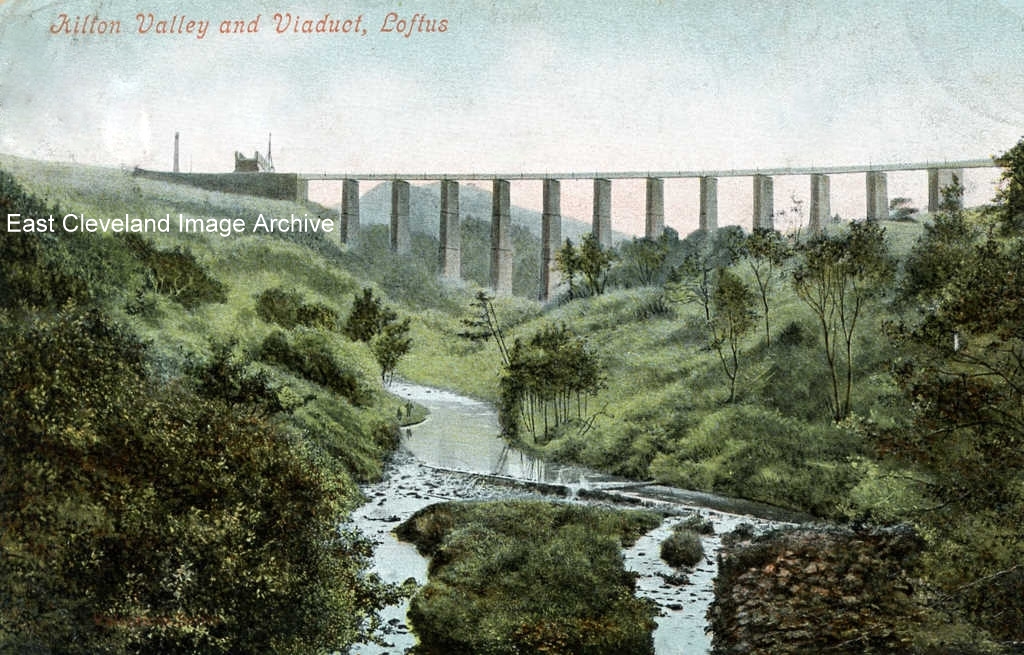
This postcard is a lovely example of early colour hand tinting to a black and white photograph and was produced by Cooke’s Fancy Bazaar in Loftus; the original was posted in Loftus on 30th July, 1905.
Image courtesy of John G. Hannah.
|
|
||
|
This postcard is a lovely example of early colour hand tinting to a black and white photograph and was produced by Cooke’s Fancy Bazaar in Loftus; the original was posted in Loftus on 30th July, 1905. Image courtesy of John G. Hannah. 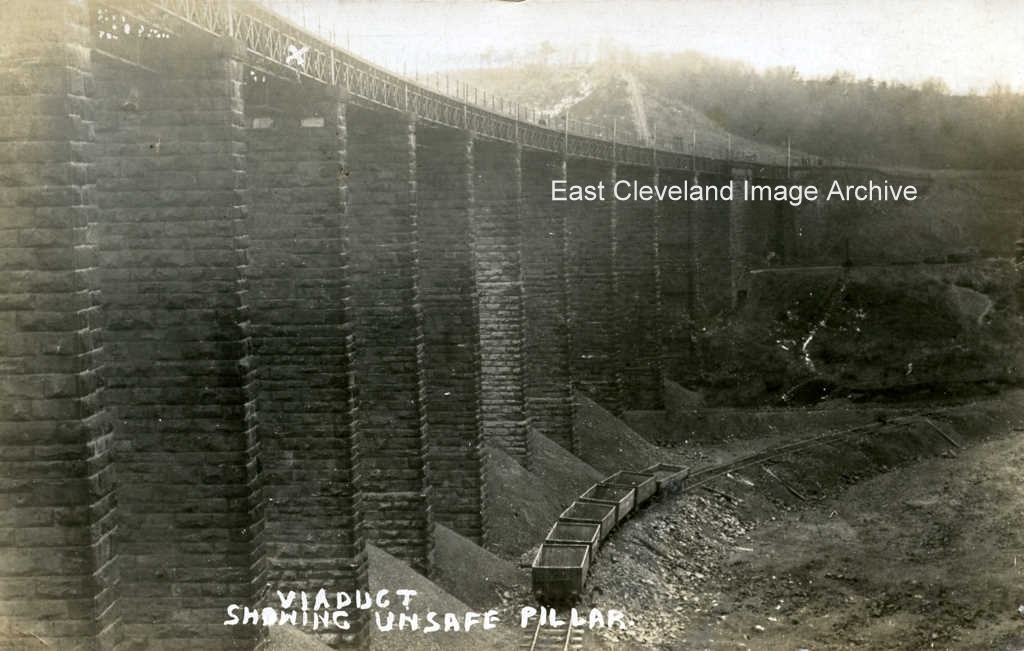 X marks the spot not of treasure, but of the unsafe pillar of the Loftus to Carlin How viaduct that caused it to be filled in with spoil from the mines. The condition of the pillar lead to the creation of the culvert to house the Kilton Beck and the infilling of the viaduct with iron stone mining waste to create the embankment we still see today. This image dates from 1911 and is from a T.C. Booth postcard. Simon Chapman tells us: ”Kilton Viaduct was infilled from 1907 to 1914 primarily so that ironstone could be worked from beneath it, particularly from the Carlin How mine. The picture was taken in 1911 when one pier cracked and train services were suspended for a fortnight in January 1911 while remedial action was taken.” During that fortnight “rail passengers were carried between Loftus and Skinningrove in Motor char-a bancs.” On consulting the postcard the sender comments ”The viaduct has been repaired and is now open for traffic.” Obviously this is an image from prior to the remedial action which Simon reports. Image courtesy of John G. Hannah and thank to Simon Chapman and Derick Pearson for the updates. 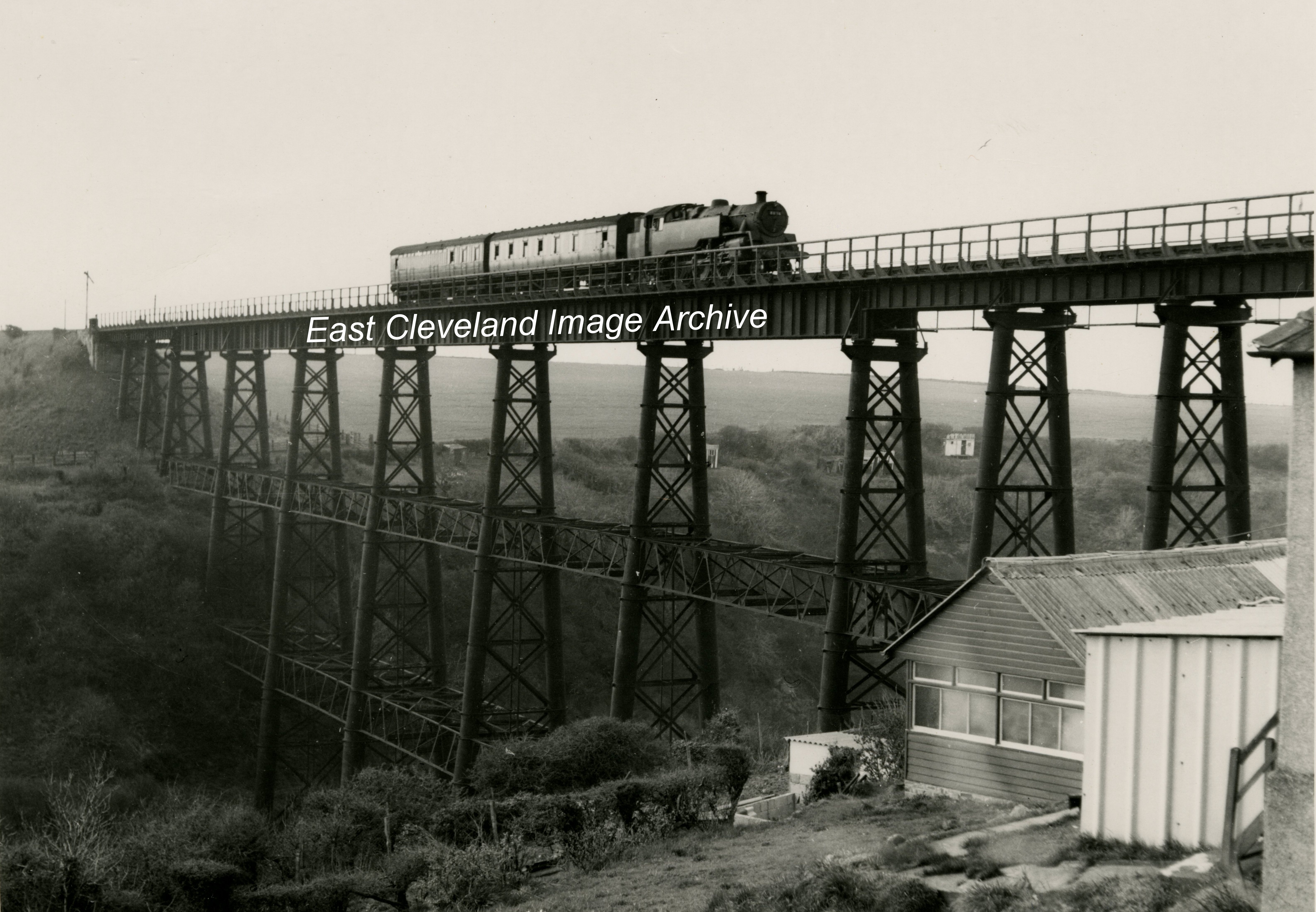 Staithes Viaduct, with a local commuter train, powered by a British Railways “Standard” tank engine. This photograph was probably taken towards the end of the line’s existence, a two carriage train indicating the decline of rail traffic as increased fares and better road links caused migration away from the railways. Simon Chapman advised the Archive: “All that remains now are the concrete piers that supported the steelwork. In view is the stone abutment which supported the west end. The east end abutment, also of stone, was demolished.” Image courtesy of Maurice Grayson and the David Liddle Collection, thanks again to Simon Chapman for the last piece of information 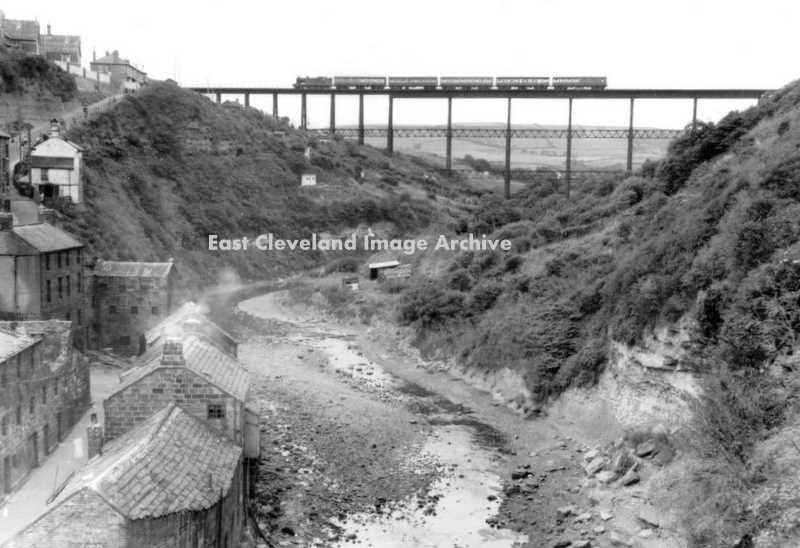 A view Staithes viaduct from downstream, looking inland; the train is heading towards Staithes station. Chris Davies tells us:”The engine is a Raven/Gresley A8 4-6-2t hauling a train of ex-NER and a Thompson suburban brake of the LNER.” Image courtesy of Maurice Grayson and thanks to Chris Davies for that update. 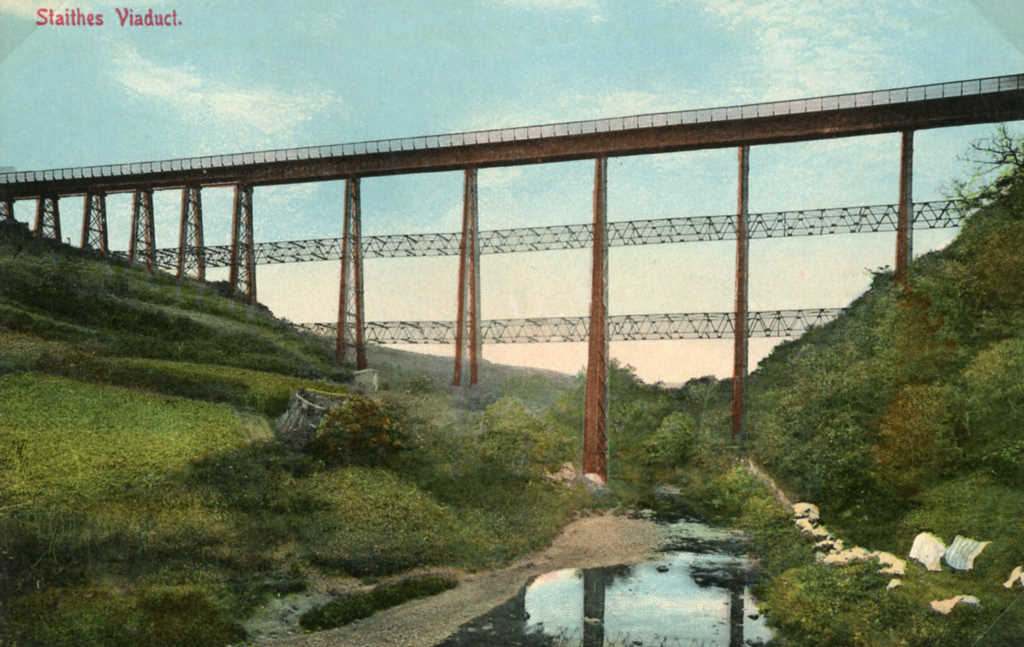 This coloured postcard view was produced by T. Watson, Lythe. It gives us a clear picture of the structure of the viaduct. Image courtesy of Beryl Morris. 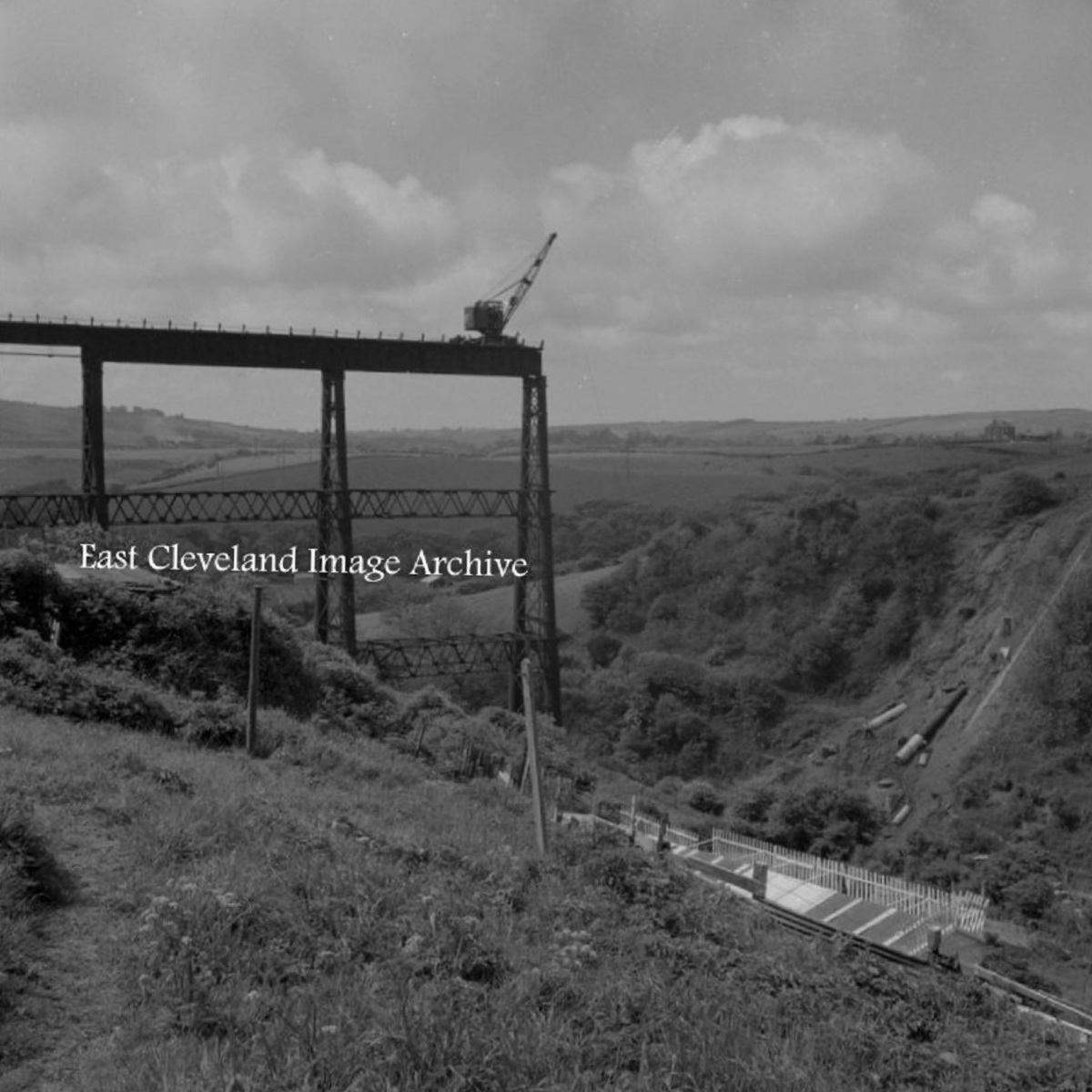 Dismantling Staithes viaduct in 1960, one of several we have of this end of an era. Eric Johnson advised that ”Subterranea Britannica” had further information on this activity. Image courtesy of Mrs Sakelaropoulos and thanks to Eric Johnson for his researches. 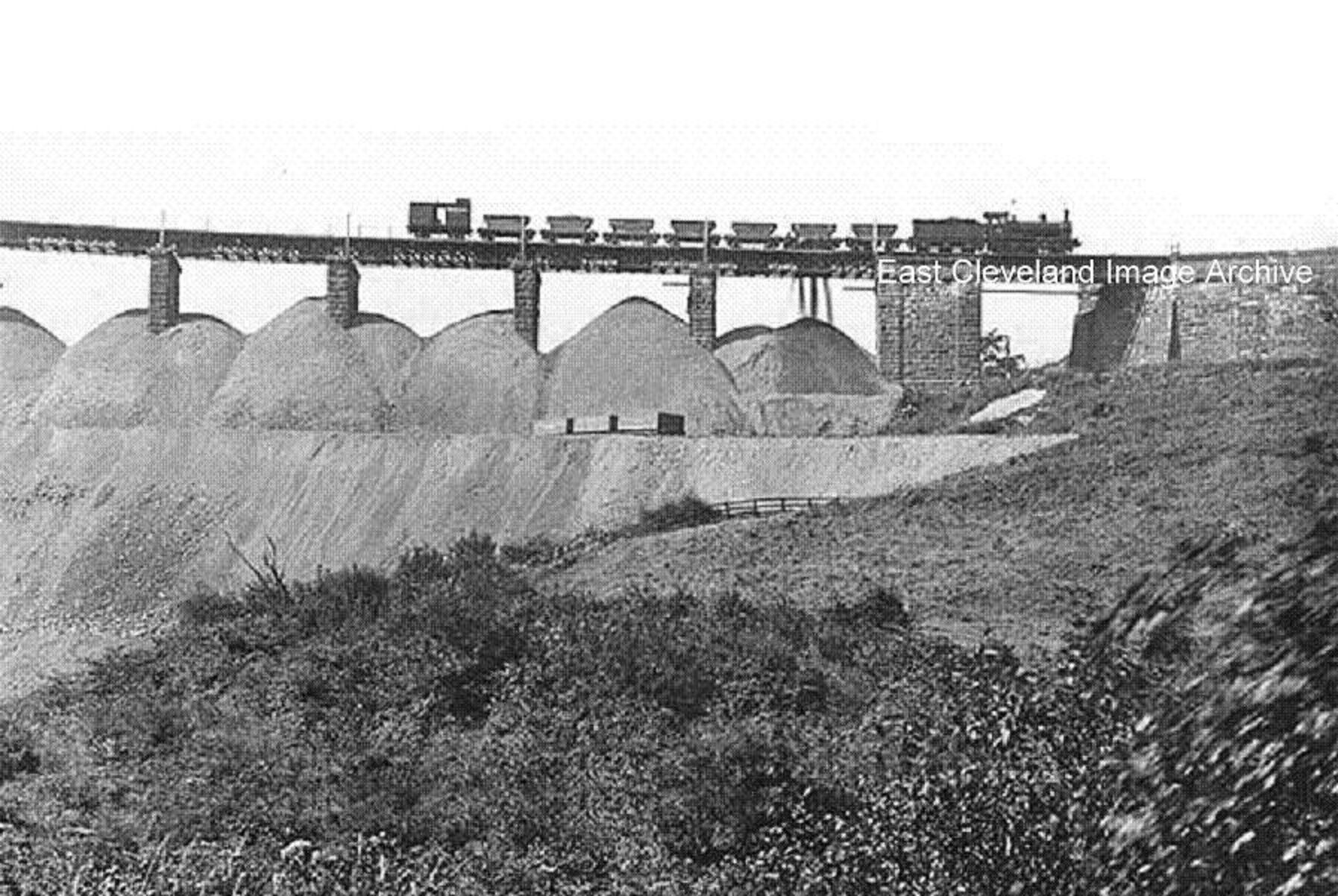 Doesn’t look real does it? The train going over Loftus viaduct is dumping shale from the mines to convert the viaduct into an embankment. The viaduct was seriously weakened by undermining from the ironstone mines, so these drastic measures were taken to fix the problem. Simon Chapman tells us: ”Messrs Bell Brothers wanted to mine ironstone from beneath the viaduct from their Carlin How Mine so arrangements were made to fill in the viaduct to support it from 1907. In January 1911 it was found that one of the piers had begun to crack because of unequal infilling so rail services were suspended for a fortnight to enable extra tipping to take place. Shale was tipped from Liverton and Loftus Mines and was completed by 1914.” Image courtesy of the Pem Holliday Collection and thanks to Simon Chapman for that update.
A view of Kilton Viaduct (prior to filling-in) to create the embankment of more recent times with – New London – being the planned name for the present day community 0f Liverton Mines when investors took on the venture. The investors had even suggested a variation in the name to Little London if they could get aggrement of the locals. The long sweep of the viaduct is easily visible in this image, as are the calcining kilns at Liverton Mine; the fumes from which used to rot the clothes of the labourers working on them. Norman Patton says ”Our family moved from “Brickyard” to Liverton mines in 1952. The promise of a fitted bathroom and hot and cold running water; with a garden front and back was too much to resist! Wages at Kilton pit were good at the time and the journey on push-bike much easier for our father. We even had a television before the Coronation and the Stanley Matthews Cup Final (12” Black and White, Console model no less)”. The new estate of council houses inspired the name ” New London” for the village and the council estate was the “Holy City”. ”Brickyard” being the local name for the Hartington Street, High Row and St Hilda’s Terrace area of Loftus; similar epithets applied in Brotton and elsewhere in Cleveland. Thanks to Norman Patton and Derick Pearson for additional information.
A clear photograph of the old bridge and to all those who passed underneath it the roman numerals (not in sight here) are forever remembered MDCCCLXXIV. Shirley Tutton (nee Cockerill) tells us: “I was one of those children who passed this way every day on my way to school in the early 1960s. The Roman numerals are often recalled as my point of reference to work out the answers in pub quizzes.” A new bridge now spans the road built to accommodate the freight trains from the Potash mine at Boulby. Bryan Richardson tells us: ”I remember a cyclist being killed when he collided with a wagon at this bridge in the late 50′s. I think this photo was taken at this time which would explain the policeman stood under the bridge and the crowd of onlookers near the wagon.” Thanks to Bryan for that update. With information now received we can give a definitive comment about this image: ”The young man that was killed was Ron Jemson, middle child of five children of Charlie and Freda Jemson of Steavenson Street, Carlin How. He was in collision with Charlie Bower’s coal lorry (this can be seen in the background of this image) under the railway bridge. Ron was only 23 years old and married for six weeks. He was cycling down to Loftus to collect his sister-in-law’s purse which had been left in a fruit shop on Station Road.” Image courtesy of Joan Jemson, with thanks to Bryan Richardson and Shirley Tutton for the updates; especial thanks to Joan Jemson for the account.
A shot of a J25 0-6-0 loco, number 65663, (based at Whitby shed) and guard’s van leaving Raithwaite Viaduct towards Whitby on the ”pick-up” goods. The locomotive is fitted with a snow-plough (known as a bufferbeam plough) . The logo on the tender looks like an early BR roundel. You only see guard’s vans on preserved railways these days, despite objections from the railmen’s union they were removed from service early in the diesel era. Image courtesy of Maurice Grayson (from the Ken Hoole/Neville Stead Collection) and thanks to Mark for the details. |
||
Recent Comments